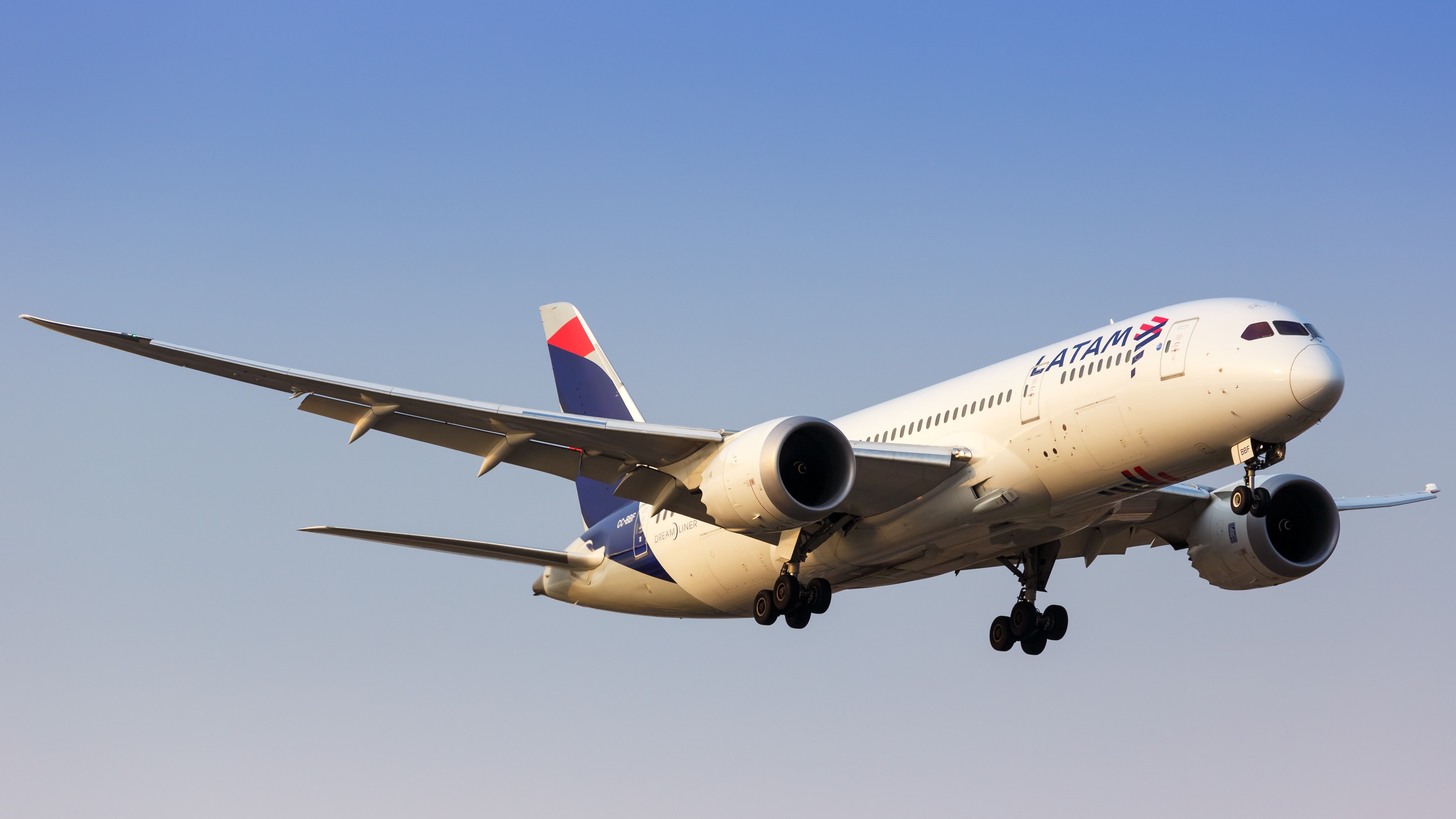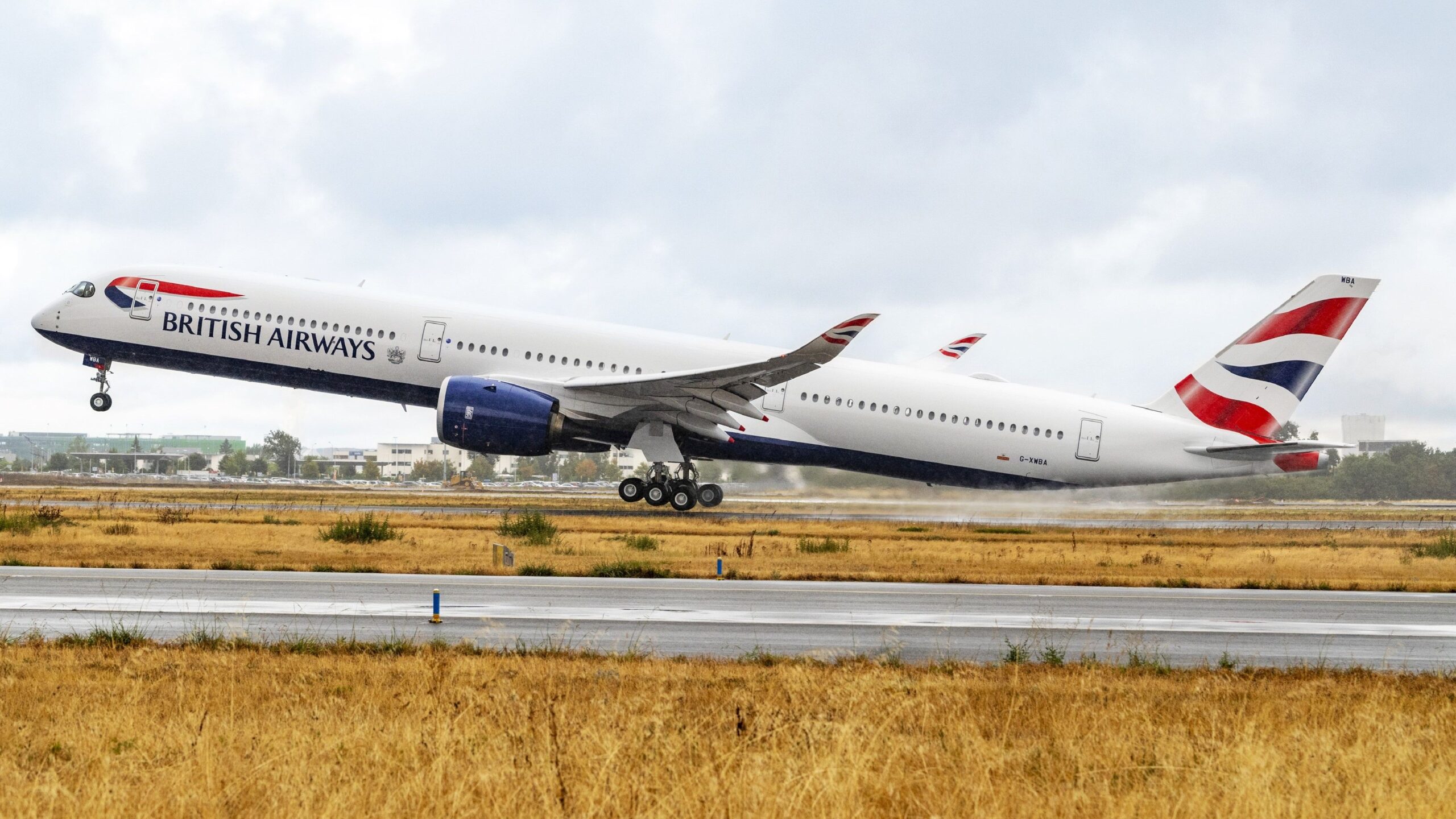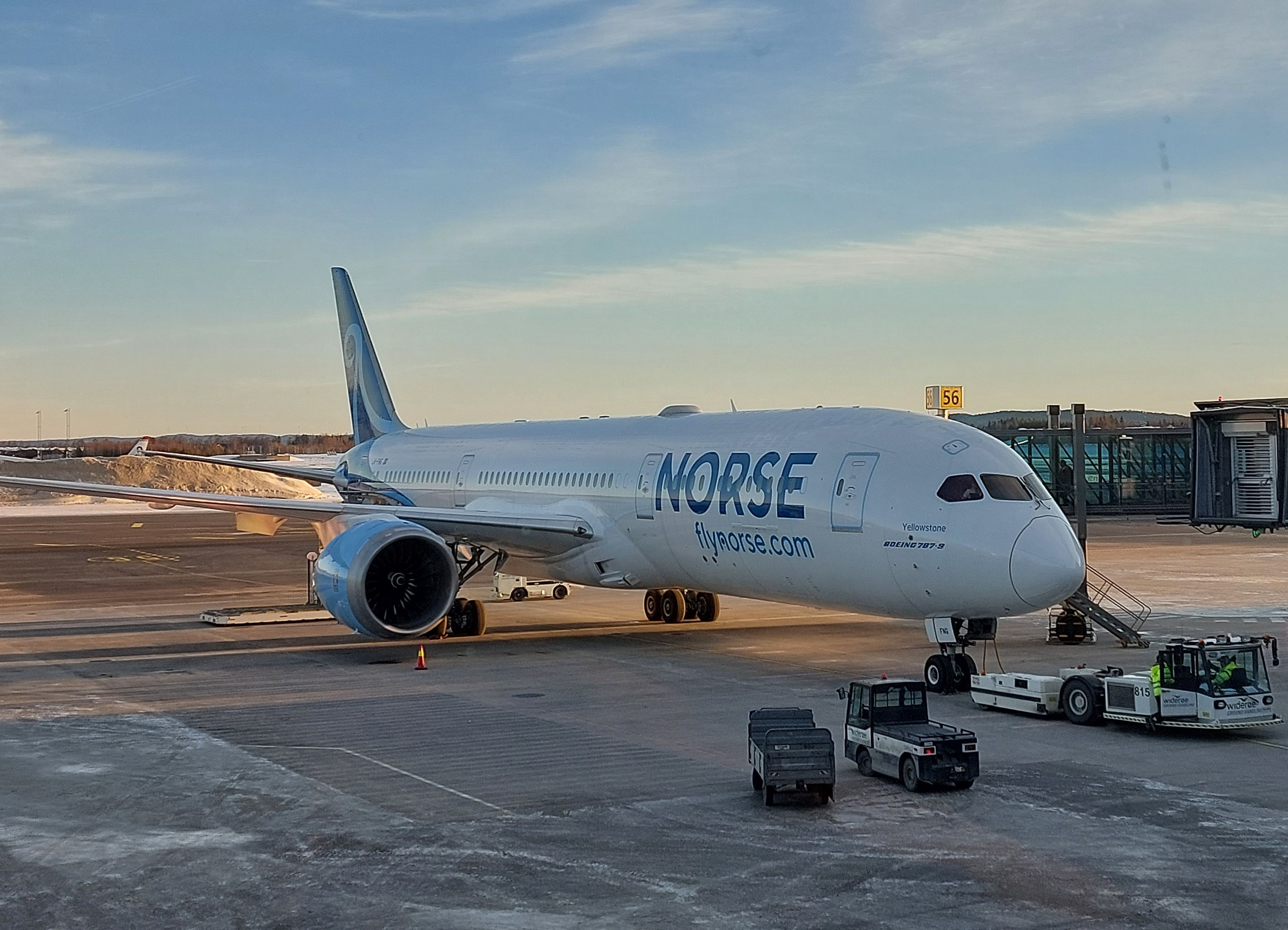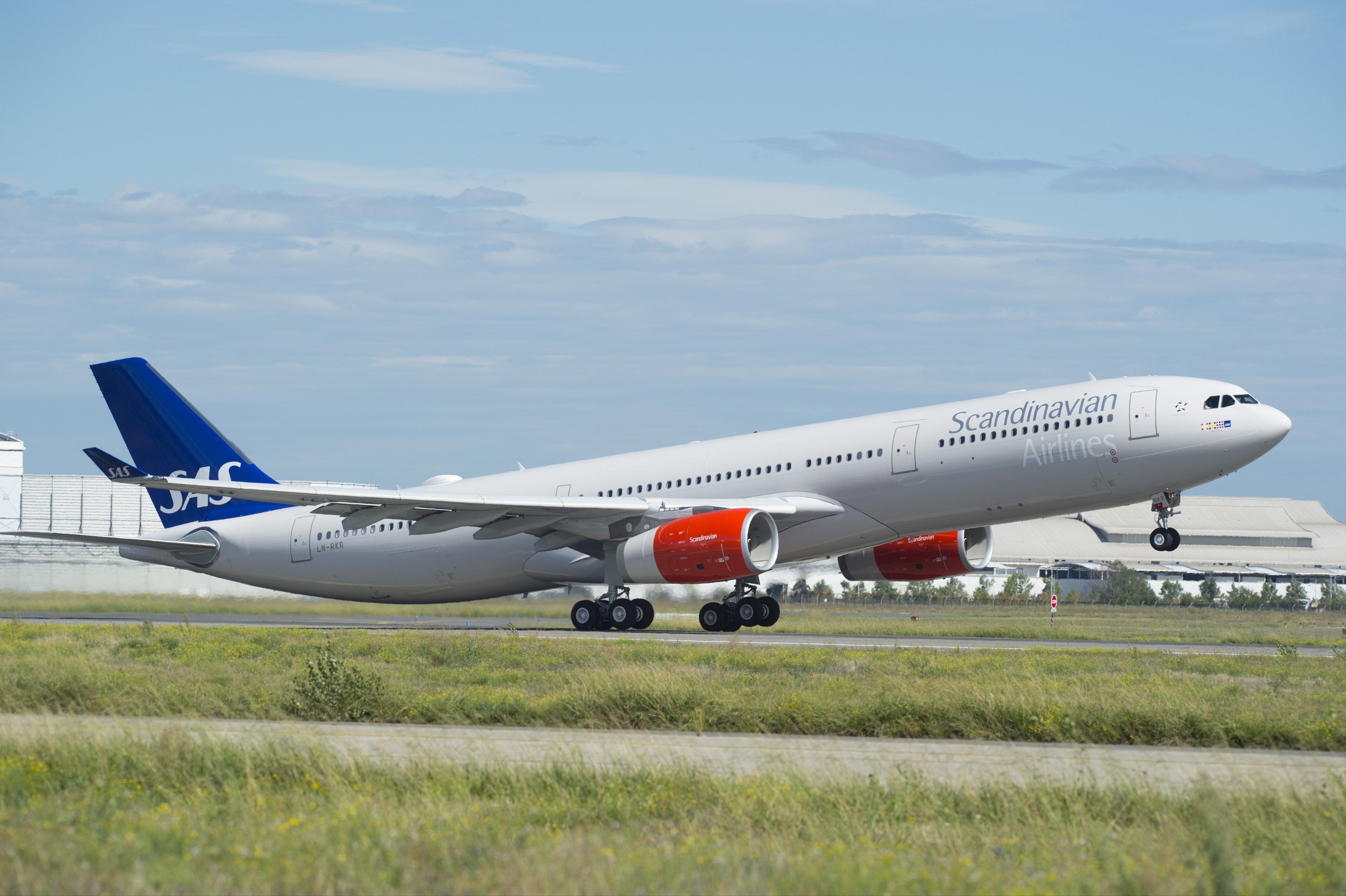For passengers traveling on long-haul flights, upgrading to a premium economy seat can be a worthwhile investment if the price is right. In addition to larger seats and extra legroom, these tickets often come with other perks, too, such as a greater luggage allowance and better onboard catering. With this in mind, let’s take a look at which European-registered airliners offer the greatest capacity for this class of travel.
Boeing 787-9
|
Boeing 787-9 Dreamliner |
Specifications |
|---|---|
|
Passengers (two-class) |
296 |
|
Range |
7,565 NM (14,010 km) |
|
Length |
63 m (206 ft) |
|
Wingspan |
60 m (197 ft) |
|
Height |
17 m (56 ft) |
|
Engine |
GEnx-1B / Trent 1000 |
For certain low-cost and leisure carriers, having a fully-fledged business class cabin wouldn’t necessarily align with the requirements of their operating model. However, premium cabins can still be a handy way of gaining extra revenue from passengers looking for a bit more comfort, so premium economy is a good balance.
According to data from ch-aviation.com, the European-registered airliners with the largest premium economy cabins are TUI’s Boeing 787-9 ‘Dreamliners.’ These twinjets have 63 premium economy seats onboard, laid out in nine rows of seven-abreast (2-3-2) seating. They offer 36 inches of pitch, compared to 33 in economy.
- Lower cabin altitude
- Cleaner air
- Higher humidity
- Smoother ride technology
- Improved temperature control
- Quieter experience
Photo: Jake Hardiman | Simple Flying
Interestingly enough, young low-cost carrier Norse Atlantic Airways has a similar model, with the 56 premium economy seats on its Boeing 787-9s (again, laid out seven abreast) also representing its best offering. These seats offer an impressive 46 inches of pitch, which is undoubtedly much appreciated by Norse Atlantic’s passengers, given the carriers’ 787s’ use on the lucrative transatlantic corridor. According to Boeing,
“The industry-leading technology of the 787 Dreamliner is creating remarkable opportunities for airlines around the world and dramatically improving the air travel experience.”

Related
Which Variants Of The Boeing 787 Dreamliner Have You Flown On?
Since first taking to the skies, the Boeing 787 ‘Dreamliner’ family of twin-engine widebody commercial aircraft has become a staple of long-haul travel around the world. More than 1,100 aircraft from a total order book of close to 2,000 have been delivered to date, with the series comprising the short-fuselage 787-8 model, the mid-size 787-9, and the stretched-fuselage 787-10.
The differing sizes and ranges of these aircraft make them useful for a huge variety of airlines and routes, which has no doubt catalyzed its worldwide popularity. While the 787-8 and 787-10 models have evaded me thus far, I have flown with the 787-9 on three different carriers, with this particular variant being the most popular and accounting for more than half of the type’s orders and deliveries.
The airlines in question came from both ends of the full-service and low-cost spectrum, with LATAM and Virgin Atlantic accounting for the former and Norse Atlantic for the latter. This further demonstrates the Dream
Airbus A330-300
|
Overall length |
63.66 m |
|---|---|
|
Cabin length |
50.36 m |
|
Fuselage width |
5.64 m |
|
Max cabin width |
5.26 m |
|
Wing span |
60.30 m |
|
Height |
16.79 m |
|
Range |
11,750 km |
|
Mmo |
Mach 0.86 |
|
Max ramp weight |
242.90 tonnes |
|
Max take-off weight |
242.00 tonnes |
|
Typical seating 3-class |
250-290 |
Sitting equal with Norse Atlantic’s Boeing 787-9s’ sizeable premium economy cabin is something a little bit different. Specifically, we have a 22-year-old Airbus A330-300 operated by none other than Turkish charter carrier Air Anka.
This aircraft, which bears the registration TC-NYA, previously flew for Scandinavian Airlines (SAS) before joining Air Anka in July 2022. All in all, 56 of its 266 seats can be found in the aircraft’s premium economy cabin, and they offer 38 inches of pitch, compared to 31-32 in economy. As with the above-mentioned airliners, they are laid out seven abreast.
- Advanced for market sustainability
- Advanced to future-proof the widebody fleet
- Advanced to easily introduce widebody operations
Photo: Airbus
Speaking of SAS, the Nordic carrier also has rather sizeable premium economy cabins on its own Airbus A330-300s. These aircraft have an identical layout to the Air Anka example, suggesting that the Turkish charter carrier was happy to retain the existing three-class configuration of its ex-SAS jet. However, Scandinavian Airlines’ aircraft are younger, at 13 years old on average.
Airbus A350-1000
|
Overall length |
73.79 m |
|---|---|
|
Cabin length |
58.03 m |
|
Fuselage width |
5.96 m |
|
Max cabin width |
5.61 m |
|
Wing span (geometric) |
64.75 m |
|
Height |
17.08 m |
|
Range |
16,482 km |
|
Mmo |
M0.89 |
|
Max ramp weight |
319.9 tonnes |
|
Max take-off weight |
322 tonnes |
|
Typical seating 3-class |
350-410 |
Sticking with the multinational European planemaker, Airbus’ A350-1000 model is another aircraft with 56 premium economy seats onboard on not one but two European carriers. Both Virgin Atlantic and British Airways have configured their XWB series aircraft in this manner, with seven rows of eight seats in a 2-4-2 layout. In each instance, these seats offer a generous seat pitch of 38 inches.
- Less operating cost
- More capabilities
- Less empty weight
- Less fuel consumption
- More environmentally sustainable
- More commonality with other aircraft
- Better integration of systems
On British Airways’ A350-1000s, the premium economy cabin is known as World Traveller Plus, and data from aeroLOPA shows that it is situated over the wings in rows 20 to 26. Virgin Atlantic, on the other hand, has two A350-1000 layouts, with leisure-oriented aircraft having premium economy in the front section. On A350s with a larger Upper Class cabin, premium economy is located over the wings.



